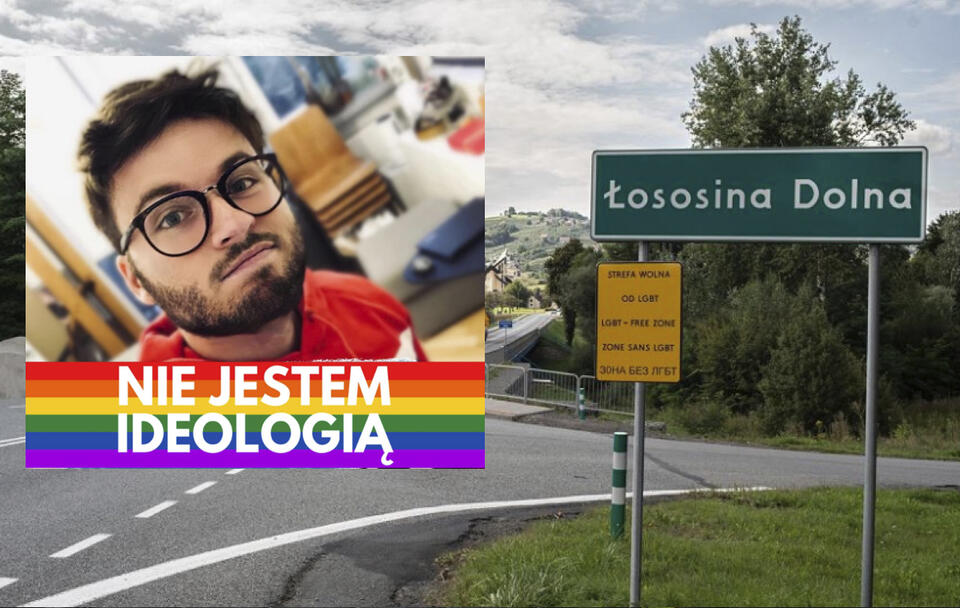
Bart Staszewski, a Polish LGBT activist, is one of media’s darlings. He is not always in a combative mood, even though the media presents him as a martyr and a hero. Moreover, it turns out he is also quite a gifted hoaxter. Interestingly, he confessed to the court in Nowy Sącz, which acquitted him of the charge of attaching a poster with the words “LGBT- free zone” on the sign with the name of the village of Łososina Dolna. As determined by the portal wPolityce.pl, the entire event was an ordinary photomontage, and Staszewski did not hang any poster. In an interview with our website, Staszewski admitted that the situation was similar in several other towns.
In September last year, Staszewski boasted on Facebook about his action in Łososina Dolna. The photo shows a poster with the words “LGBT – free zone” attached to the road sign with the village’s name near Sadowice. The left-wing media were delighted with Staszewski’s “courage” and determination. He, on his part, excelled on social media, gave interviews, and busked in his fame. The town filed a suit against Mr. Staszewski in the District Court in Nowy Sącz. On March 19th, the court acquitted Staszewski stating that the offense had not occurred. Earlier on, the incident was investigated by the police. Notifications were sent by politicians of the Zjednoczona Prawica [United Right]. Why did the court acquit Staszewski? An investigation showed that, among others, Staszewski had never physically attached the sign with a provocative inscription on it to the pole with the name of the village of Łososina Dolna.
Staszewski’s mystification
From the testimony of the LGBT activist, it is clear that his action was a publicity stunt, a hoax, and a photomontage. Staszewski asked his colleague to stand by the sign with the town’s name while holding a poster with the words “LGBT-free zone.” Then he took a photo of the two signs, which allowed him to carry out the next step of the mystification. Staszewski testified that he then used a graphic computer program by which he removed the image of the friend from the photo and posted the fabricated photo on Facebook.
According to the testimony of an LGBT activist, he had to hurry to take the photo, and the entire “operation” lasted about a minute.
The post was too thick
Bartosz Staszewski, in an interview with the portal wPolityce, also admitted that he had also used photomontage during other such campaigns. In his opinion, the message was more important than the method of carrying it out.
In an interview with the portal wPolityce.pl, Bart Staszewski said:
“I always went to these places. In total, I took about 40 photos. In three or four places, it turned out that the post on which the signs with the name of the town were placed were too thick for me to attach my sign to it. So, I had to find another way. When someone was with me, that person then held my board in front of the sign. Then I used a computer program. There have been several such situations. The technicalities are of no interest to me. For me, the most important thing is the message.”
For the City Councils, the towns’ residents, and the outside observers, Staszewski’s falsification of reality is reprehensible. It is morally unacceptable, and harmful to the image of the affected towns. Since it was picked up and publicized by international media, it is also detrimental to Poland’s image.
The original text, in Polish, can be found here:
https://wpolityce.pl/polityka/550772-ujawniamy-prowokacja-staszewskiego-byla-fotomontazem